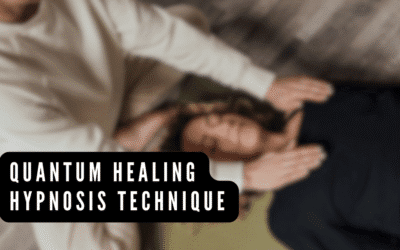If you’ve ever wondered whether hypnosis is real or just a trick seen in movies or stage shows, you’re not alone. Many people are skeptical about hypnosis and its potential to help with real-life challenges like stress, anxiety, and chronic pain.
Let’s explore the evidence, debunk some common myths, understand how hypnosis works as a legitimate therapy, and how you can get started.
- Is Hypnosis Legit: Answered by Experts
- Understanding Hypnosis
- Common Myths About Hypnosis
- How Does Hypnosis Work?
- Practical Applications of Hypnosis
- Benefits of Hypnotherapy
- What to Expect During a Hypnotherapy Session
- Evaluation of Self-Hypnosis Techniques
- The History of Hypnosis
- How to Choose a Qualified Hypnotherapist
- Ready to Experience the Benefits of Hypnosis?
Is Hypnosis Legit: Answered by Experts
Contrary to what is portrayed in the movies about hypnosis, experts have a different view. Evidence shows the effectiveness of clinical hypnosis for treating several ailments.
Dr. David Spiegel, a psychiatrist at Stanford University and a leading expert in hypnosis, explains that “hypnosis is a natural state of highly focused attention paired with an openness to suggestion.”
His works highlight how hypnosis alters brain regions responsible for attention and control, demonstrating its scientific validity.
Dr. Mark Jensen, a professor at the University of Washington, has extensively studied the application of hypnosis for chronic pain management.
He explains hypnosis works by leveraging the brain’s natural ability to focus and reframe experiences. His studies have shown that therapeutic hypnosis can significantly improve the quality of life, and reduce pain intensity for individuals.
The American Psychology Association (APA) formally recognizes hypnotherapy as a valid form of therapy. It highlights its success in clinical settings, noting that hypnosis helps manage stress, chronic pain, and mental health conditions.
Understanding Hypnosis
At its core, hypnosis is a state of deep relaxation and heightened focus.
In this state, your conscious mind (the part you use to think and make decisions) quiets down, making it easier for your subconscious mind to accept helpful suggestions.
It’s not mind control; instead, it’s teamwork between you and the hypnotherapist to bring about positive changes in your life.
Hypnosis is effective for treating several conditions such as:
- Mental health issues including anxiety and depression
- Weight loss
- Quitting smoking
- Trauma
Common Myths About Hypnosis
Hypnosis has been around for centuries, but many people still believe myths that aren’t true. Thanks to movies, TV shows, and misunderstandings, hypnosis is often seen as mysterious or even scary.
Let’s break down some of the most common myths about hypnosis, and uncover the truth behind this powerful form of therapy.
Mind Control Misconception
Contrary to popular belief, hypnosis is not about losing control. People remain aware and cannot be forced to do anything against their will.
During a hypnosis session, you remain in complete control and can choose to come out from an induction state. Hypnosis involves cooperation between you and your therapists and not manipulation.
Universal Hypnotizability Fallacy
Another myth is that everyone is susceptible to hypnosis to the same degree. This is not true. How people respond to hypnosis varies, and this variation is normal.
Some people are highly hypnotizable, meaning they can be hypnotized easily, and respond strongly to hypnotic suggestions.
A couple of factors can affect susceptibility to hypnosis including an unwillingness to be open, or having lower functional connectivity.
Dr. Spiegel’s research shows that people who are more easily hypnotized have stronger connections between certain brain parts. Specifically, the central executive network, which handles tasks like decision-making and memory, works closely with the salience network, which helps focus on what’s most important.
Entertainment vs. Therapy
Stage hypnosis is often exaggerated for entertainment purposes and is significantly different from clinical hypnosis, which focuses on therapeutic outcomes.
Clinical hypnosis is backed by scientific evidence and used in real-world applications like pain relief and treating phobias.
How Does Hypnosis Work?
Hypnosis works by guiding a person into a deeply relaxed state where their focus becomes sharper and their unconscious mind is more open to suggestions.
Hypnotherapists use tools like guided imagery, progressive muscle relaxation, and verbal suggestions to help you enter a trance-like state.
This process allows the brain to shift into a different mode of thinking, one where old habits or negative thought patterns can be reprogrammed.
Once the session is complete, your therapist guides you back to consciousness.
Brain’s Response During Hypnosis
Scientific studies using neuroimaging have shown that hypnosis changes how certain brain regions communicate.
For example, brain activity or areas responsible for focus, emotion, and decision-making become more connected, helping you stay engaged and respond to suggestions.
Additionally, hypnosis has been seen to influence the brain’s neurotransmitters and neurohormones such as dopamine and endorphins, contributing to its overall effectiveness.
Role of Suggestibility
Hypnosis relies on suggestibility, which is a person’s natural ability to take in new ideas.
While under hypnosis, you are not “controlled”; instead, you are more open to helpful suggestions that align with your goals, such as quitting smoking or reducing anxiety.
Practical Applications of Hypnosis
Hypnosis isn’t just about putting people into a trance, the end goal is to cause real change — mentally, or physically.
Here are some common uses for hypnosis:
- Anxiety: Hypnosis can help individuals manage anxiety by promoting deep relaxation and addressing the root causes of their fears. Hypnotherapy reduces symptoms of anxiety by changing the way individuals respond to stress and negative thought patterns.
- Pain Management: Individuals suffering from chronic or acute pain often find relief through hypnosis. APA highlights how hypnosis has been effective in managing pain, such as migraines, irritable bowel syndrome (IBS), and even post-surgery recovery. It does this altering the brain’s perception of pain and calming emotional responses tied to discomfort.
- Smoking Cessation Support: Quitting smoking can be difficult, but hypnosis can help individuals reframe their mindset about smoking, and break the habit by addressing triggers and reducing cravings.
- Weight Loss and Healthy Habits: Hypnosis is also a useful aid for weight loss, as it can help reprogram unhealthy eating patterns, emotional eating habits, and exercise aversion.
- Sleep Improvement: For people struggling with insomnia or other sleep disorders, hypnosis can improve sleep patterns naturally. Research has shown that hypnosis can guide the mind into a state conducive to rest, helping individuals fall asleep faster and enjoy deeper, more restorative sleep.
- Overcoming Fears and Trauma: Hypnosis helps individuals confront and overcome deep-seated fears, such as phobias related to heights, flying, or public speaking. It is also used in therapy to address past traumas by safely accessing and processing emotional memories stored in the subconscious mind.
Benefits of Hypnotherapy
Hypnotherapy offers a wide range of benefits that can improve physical, mental, and emotional well-being.
These benefits include:
- Emotional Well-being: Hypnotherapy can help you process and manage emotions more effectively. It has been shown to reduce symptoms of depression, anxiety, and other mental health conditions.
- Improved sleep patterns: Hypnosis can you you fall asleep faster, and improve the quality of your sleep.
- Chronic pain management: If you’re struggling with pain from conditions like arthritis, migraines, and fibromyalgia, these can be alleviated through hypnosis.
- Breaking Unhealthy Habits: hypnosis can help you reframe unhealthy thinking patterns that promote bad habits with positive ones.
- Improving Gastrointestinal Issues: Hypnosis has been shown to alleviate abdominal pain, bloating, and other IBS-related symptoms
- Stress Reduction: Hypnotherapy encourages the body’s natural relaxation response, aiding in stress relief. It can also reduce the frequency and intensity of hot flashes in menopausal women.
Side Effects and Risks
Hypnosis is generally considered safe when conducted by trained professionals, with minimal risks involved.
Some people may experience little to no discomfort during sessions. However, some may report:
- Drowsiness: Feeling unusually sleepy or fatigued after a session.
- Dizziness or Lightheadedness: A mild sense of disorientation as the mind adjusts from the deeply relaxed state.
- Headaches: Occasionally, people may experience headaches due to emotional release or mental strain.
- Emotional Reactions: Hypnosis may bring suppressed emotions to the surface, leading to temporary sadness or heightened emotions.
These effects are typically short-lived and resolve quickly after the session.
When Hypnosis May Not Be Safe
Hypnosis may not be suitable for everyone. Individuals with certain conditions like schizophrenia or psychosis, epilepsy, dissociative disorders should consult a healthcare provider before pursuing hypnotherapy.
What to Expect During a Hypnotherapy Session
To get the most out of your hypnosis sessions, it’s important to know what to expect before, during, and after.
Preparation for Sessions
Before your first hypnotherapy session, it’s essential to approach the experience with an open mind and clear goals.
Reflect on the specific challenges you’re facing, whether it’s chronic pain, anxiety, smoking cessation, or another issue you want to address.
Keep in mind that hypnosis isn’t a one-time fix, so it’s useful to think about long-term outcomes rather than expecting immediate solutions.
Further, keep an open mind. If you don’t have an open mind, you won’t be receptive to suggestions, and won’t get the desired outcomes.
Typical Session Structure
A typical hypnotherapy session begins from induction to awakening.
1. Induction
This is where you are guided into a state of deep relaxation. This may involve progressive muscle relaxation, which helps release physical tension and calms the body.
The hypnotherapist might also use verbal suggestions to help you focus your attention.
2. Deepening the Hypnosis
After relaxation, the therapist may deepen the trance using hypnotic techniques designed to increase the depth of your focus and reception to suggestions.
These may involve counting down or using imagery to guide you further into a trance-like state.
3. Therapeutic Suggestions
Once you’re deeply relaxed, the hypnotherapist will begin to offer targeted hypnotic suggestions designed to address the issue you’ve come for.
4. Awakening
Once the therapeutic part of the session is complete, the therapist will gently guide you back to full awareness, bringing you out of the hypnotic state.
Evaluation of Self-Hypnosis Techniques
Self-hypnosis allows you to manage stress, improve focus, and even tackle issues like insomnia on your own.
Your hypnotherapist can provide you with some of these techniques to help you achieve relaxation and positive change whenever needed.
Here are some examples:
- Progressive Muscle Relaxation: Gradually tensing and then relaxing each muscle group in your body to release tension and induce a state of calm.
- Visualization: Imagining a peaceful, calming scene (like a beach or forest) to promote relaxation and mental clarity.
- Breathing Techniques: Using slow, deep breaths to help calm the nervous system and reduce stress.
- Affirmations: Repeating positive statements to challenge and change negative thought patterns, promoting a healthier mindset.
- Eye Fixation: Focusing on a specific object or point, such as a spot on the ceiling or a candle flame, to enhance concentration and relaxation.
- Body Scan: Bringing attention to different areas of your body to become more aware of tension and consciously releasing it.
- Anchoring: Associating a physical gesture (like tapping your fingers or pressing your thumb and forefinger together) with a feeling of relaxation, so you can trigger that relaxed state whenever needed.
- Mindfulness: Practicing present-moment awareness to stay focused and reduce overwhelming thoughts, especially in stressful situations.
The History of Hypnosis
Hypnosis dates back to the late 18th century, beginning with Franz Mesmer and his practice of animal magnetism.
Mesmer believed that an invisible magnetic fluid affected health, and used verbal suggestions and touch to treat patients. Though all his theories and techniques were fairly quickly dismissed, Mesmer’s techniques paved the road for physicians to explore the healing power of suggestion.
In the 19th century, James Braid, a Scottish surgeon, shifted the focus of hypnosis to a more scientific understanding.
He gave the earliest definition of the term “hypnosis” and explained it as a state of focused attention, which he later connected to changes in brain activity rather than magnetic forces. This shift marked hypnosis as a legitimate clinical therapy.
James Braid is often considered the father of generation 1 hypnosis. Like cognitive behavioral therapy that is now exploring third generation techniques, based on updates in science, practice and research, effective, modern hypnotherapy is now on its fourth generation.
Hypnosis in Pop Culture
Movies and literature often portray hypnosis as a form of mind control, fueling myths about its true nature.
These dramatized depictions only contribute to the misconception that hypnosis can make individuals act against their will, which is far from the reality of clinical hypnosis.
In practice, hypnosis involves collaboration between the therapist and the subject. Rather than controlling the individual, hypnosis taps into the subconscious, allowing for positive change in behavior and emotional responses.
How to Choose a Qualified Hypnotherapist
Working with a qualified hypnotherapist means you get the best results from your sessions. Here are some things to consider:
Credentials and Certifications
When choosing a hypnotherapist, first and foremost, you want to make sure that the person has training and experience with hypnosis specifically. A competent hypnotherapist should have no less than 1000 hours of training in hypnotherapy specifically, with more than five years of practical experience seeing clients.
It may be helpful if they belong to a reputable organization like the International Medical And Dental Hypnotherapy Association (IMDHA).
In addition to certifications, consider the therapist’s education and experience.
A qualified hypnotherapist should have a extensive training in hypnotherapy specifically, and should have experience working with the type of situation you are experiencing and wanting help with.
Questions to Ask Before Starting
Before committing to a hypnotherapy session, ask the right questions to ensure the therapist is a good fit for your needs.
Here are five key questions to consider:
1. What is your experience with treating my specific issue?
2. What is your success rate with your clients?
3. What techniques do you use during a session?
4. How many sessions do you recommend for my situation?
5. How much training and experience do you have with hypnotherapy specifically?
Ready to Experience the Benefits of Hypnosis?
At Northern Utah Hypnosis Center, I offer personalized hypnotherapy sessions to help you overcome challenges and improve your quality of life.
Whether you’re struggling with anxiety, chronic pain, or smoking cessation, with my expertise, I can guide you toward lasting change just as I have done for many others.
Schedule a consultation today, and discover how hypnosis can help you. Take the first step toward a healthier, happier you!
FAQ
Is hypnosis safe?
Yes, hypnosis is a safe and non-invasive therapy when conducted by a trained professional. It works through relaxation and positive suggestions, with minimal side effects like temporary drowsiness or emotional release.
Can hypnosis help with anxiety and stress?
Absolutely. Hypnosis promotes deep relaxation and reprograms negative thought patterns, making it an effective tool for reducing anxiety and managing stress.
How long does it take for hypnosis to show results?
Results can vary depending on the individual and the issue being addressed. Some people notice improvements after one session, while others may require multiple sessions for lasting change.
Will I lose control during hypnosis?
No, you remain fully in control during hypnosis. It is a collaborative process where you are aware of your surroundings and can choose to exit the hypnotic state at any time.
What conditions can hypnosis help treat?
Hypnosis can address a range of issues, including chronic pain, anxiety, smoking cessation, weight loss, sleep disorders, and phobias. It is also used to enhance focus, confidence, and emotional well-being.


